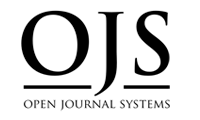The necroeconomy of electricity generation for mining. The community impact of the use of petcoke in Tocopilla (Chile, 2000-2015)
Article Sidebar
Keywords:
Main Article Content
Abstract
From a historiographic methodology and an anthropoloical hermeneutic, this article describes and analyzes a process derived from large-scale copper mining and the generation of electrical energy. necessary to develop it, in the first five years of the 21st century. This production regime, within the framework of commercial competitiveness, led to a necroeconomy through the introduction of petcoke ,as fuel in thermoelectric plants, This fuel structured a strong socio environmental precariousness and forged the production of a territorial and community subsidiarity. In other words, the Tocopilla population had to breathe, endure, and suffer the environmental and bodily effects of productive decisions, which were protected by subsumed state agents and by weakness in environmental regulation. To speak of necroeconomics is to make one of the adverse functions of capitalism and its subordinate agents in politics visible, which produces a superfluous population, no longer necessary to “exploit” but rather manage — one way of getting these population surpluses is exposing them to all kinds of dangers and risks. In this way, vulnerability and death are hierarchized and disposability is built in some social groups through slow violence or dense outbreaks on "subsets" of humanity classified at a lower level. Thus, the subjects of rights, become subjects of waste, and also subjects of death; in other words, people who, due to foreign and suddenly invisible economic factors, ceased to be part of the social world and were excluded from the norms that ensure vital protection.
Article Details
Damir Galaz-Mandakovic Fernández, Universidad de Tarapacá, Chile
Damir Galaz-Mandakovic Fernández es Profesor de Historia y Geografía por la Universidad de Tarapacá (2008), Magíster en Ciencias Sociales por la Universidad de Antofagasta (2013), Magíster y Doctor en Antropología por la Universidad Católica del Norte (2017) y Docteur en Histoire por Université Rennes 2 (2017). Ha desarrollado sus investigaciones sobre la historia de la minería en el desierto de Atacama y en el suroeste de Bolivia durante el siglo XX, con énfasis en los procesos tecnológicos y sus derivaciones urbanas, migratorias, biopolíticas, sociales, arquitectónicas y ambientales. Dirige el proyecto Fondecyt 11180932.

This work is licensed under a Creative Commons Attribution 4.0 International License.
Culture, Man and Society (CUHSO) by the Catholic University, Temuco, is distributed under a Creative Commons Licence: Licencia Creative Commons Atribución-NoComercial-CompartirIgual 4.0 Internacional. Based on a work found at http://cuhso.cl.
In all cases, the copyright is conserved by the authors.
The works published in CUHSO can be shared, copied and distributed in any medium or format. CUHSO authorises the adaptation, remixing, transformation and creation from parts of the work. By agreeing to this licence, the previous principles cannot be revoked.
Authorships must be acknowledged, and a link to the license must be provided and it must be acknowledged if any changes have been made. You can do this in any reasonable way, but not in a way that suggests that you have the support of the licensor or in order to receive compensation for its use. The works published in CUHSO cannot be used for any commercial purposes. Any work derived from the content published in CUHSO




